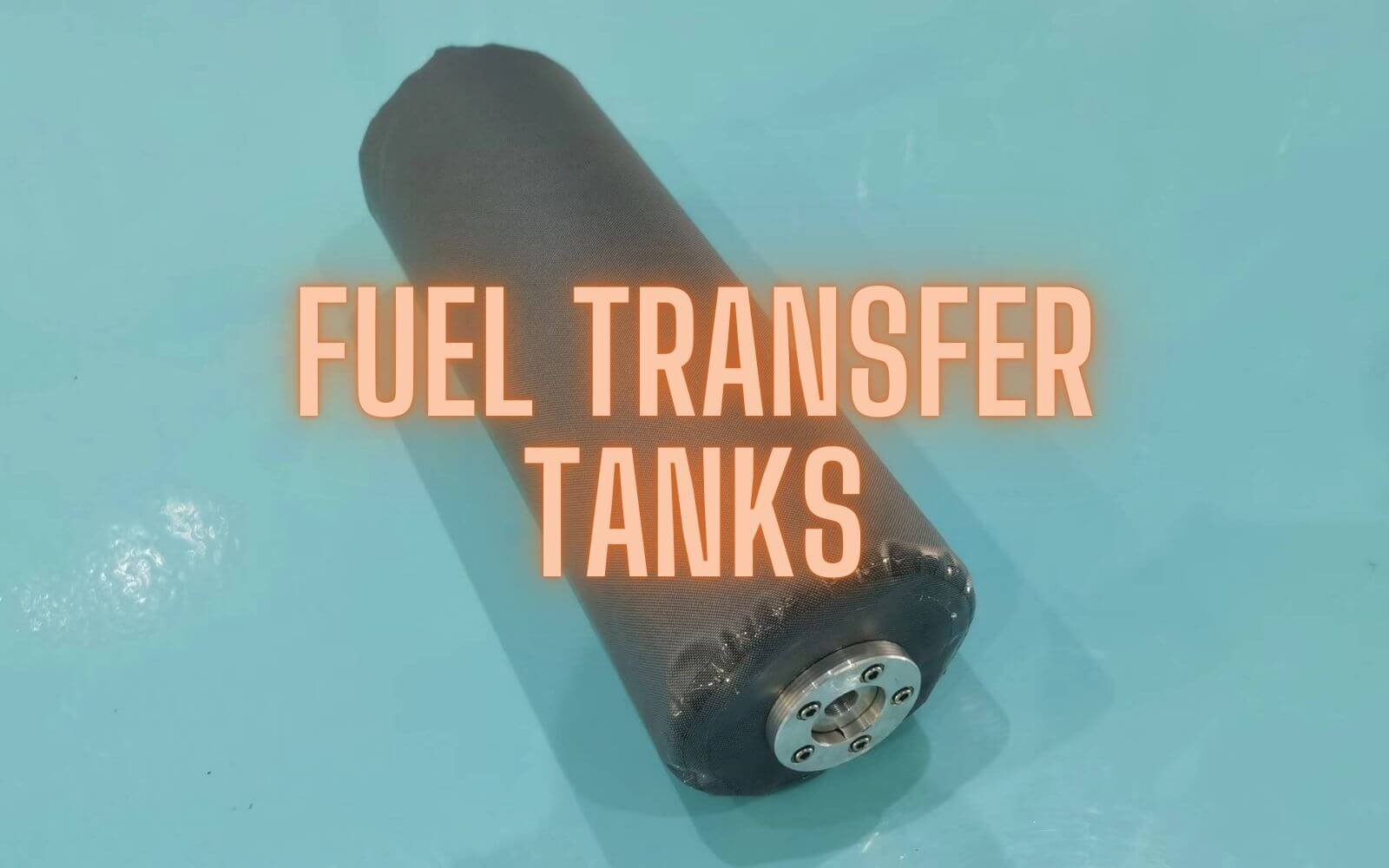FUEL TRANSFER TANKS
Fuel transfer tanks are indispensable for transporting and storing fuel in industries ranging from agriculture to construction. Choosing the right type—using the portable fuel tanks or stationary fuel tanks—depends largely on your specific needs, operational environment, and future requirements. While stationary tanks offer stability and large capacity, portable fuel transfer tanks shine when it comes to mobility and convenience. Is there any solution can combine those features together? In this article, we’ll dive into the differences and help you decide which is best suited for your fuel storage and transportation needs.
Understanding Fuel Transfer Tank
Fuel transfer tanks design to safely store and transport fuel, such as gasoline, diesel, kerosene or other liquid fuels. These tanks commonly use in industrial applications, construction sites, military purposes and even on farms where fuel needs to be transported to equipment or vehicles. Those type of transfer tank should be portable and durable to easily handle and deploy.
What Are Portable Fuel Transfer Bladders?
Portable fuel transfer tanks are easy to move and lightweight, mostly compact, designed to easily move from one location to another. They are often produced with features like flexibility, compaction, easy to installation, making them easily to do the transportation when empty and saving time to install when need them. Commonly made of plastic materials: PVC or TPU. These tanks prioritize portability without compromising durability.
What Are Stationary Fuel Tanks?
Stationary fuel transfer tanks mostly use for fixed placement and typically hold larger quantities of fuel. They are robust and ideal for long-term fuel storage needs. These tanks often place mounted on stands or platforms and engineer to remain in one location for long periods. Traditionally, the steel or aluminium tanks are considerable. Now the innovative flexible bulk fuel tank can also choose to use for bulk fuel storage and transportation.
Key Differences Between Portable and Stationary Fuel Tank
1. Mobility
- Portable Tanks:Perfect for applications requiring fuel to be transported across various sites.
- Stationary Tanks:Best for centralized fuel storage where frequent relocation isn’t necessary.
2. Capacity
- Portable Tanks:relatively smaller in size, but during the development of the technology, the portable tanks can be designed with large size also.
- Stationary Tanks:Larger capacities, but in current application, the stationary tank also has small size, like 15L, 1000L, etc.
3. Versatility
- Portable Tanks:Suitable for fueling equipment in remote areas or during emergencies.
- Stationary Tanks:Designed for consistent, high-volume fuel distribution in one location.
4. Installation Requirements
- Portable Tanks:Require minimal setup; they’re ready to use after release from the packing carton.
- Stationary Tanks:Often need professional installation and compliance with local regulations.
Advantages of Portable Fuel Bladders
1. Unmatched Convenience
Portable tanks are ideal for projects which require mobility. Whether you’re refueling tractors on a farm or generators at a construction site, these tanks make it easy to transport fuel when the sites needed.
2. Cost-Effective
Without complicated equipment for setup or installation, flexible portable fuel transfer tanks are a budget-friendly choice for those with smaller-scale fuel storage needs on 2 factors at least. The cost saving products which compared with some traditional tanks and the price saving on the labor costs.
3. Emergency Readiness
In situations like natural disasters or power outages, having a portable tank ensures you can quickly and efficiently transport fuel to critical sites. Quick response and fast deployment can easily be made by flexible fuel tanks, as the compacting process when tank is empty and easy installation.
4. Lightweight and Durable
Collapsible portable tanks use high-strength materials like Polyvinyl chloride or Thermoplastic Polyurethanes, ensuring durability while remaining lightweight.
Applications for Portable Fuel Transfer Tanks
Agriculture:
Transporting fuel to tractors, harvesters, aquaculture systems, firefighting water supplies and other equipment across large fields.
Construction:
Refueling machinery on remote project sites where access to fuel stations is in specific spaces.
Transportation:
Easy to delivering fuel to trucks, boats, sites or other vehicles in transit.
Emergency Services:
Supplying fuel to backup generators during power outages or crises.
When to Choose Stationary Fuel Transfer Tanks
While portable tanks excel in mobility, there are scenarios where stationary tanks are the better option:
- You need to store large amounts of fuel for extended periods.
- Your operations confineto a single site, such as a factory or distribution center.
- You prioritize stability over mobility, such as in high-volume fuel usage scenarios.
For stationary tanks, the flexible is also an idea choice, the large size tank for bulk fuel storage in fixed location.
Making the Right Choice: Factors to Consider
1. Your Operational Needs
If your work requires frequent movement of fuel, a portable tank is a no-brainer. For fixed operations with high fuel demands or fuel needs are large, go with stationary large tanks is better.
2. Budget
Portable tanks are often more affordable upfront, and the budget can also affect the size, fittings, etc.
3. Regulatory Compliance
Check local regulations. Portable tanks typically have fewer compliance hurdles, but for different applications, the regulation may be different, it’s better to confirm with the local laws or check with supplier in advance.
4. Maintenance Requirements
Portable tanks are easier to clean and maintain due to the flexibility and bacterial resistance features, then please follow the guide from the factory to do the routine maintenance.
Conclusion
Choosing between portable and stationary fuel transfer tanks boils down to your specific needs. Flexibility, convenience, and mobility are your priorities, portable tanks are the clear winner. They are a game-changer for industries that require fuel on the go, such as agriculture and construction.
Understanding the differences and advantages of each type will help you make an informed decision, ensuring your fuel storage and transportation needs are met efficiently and cost-effectively.








